Kuota Khan Pro Team Edition review
We test Nacer Bouhanni's favourite ride
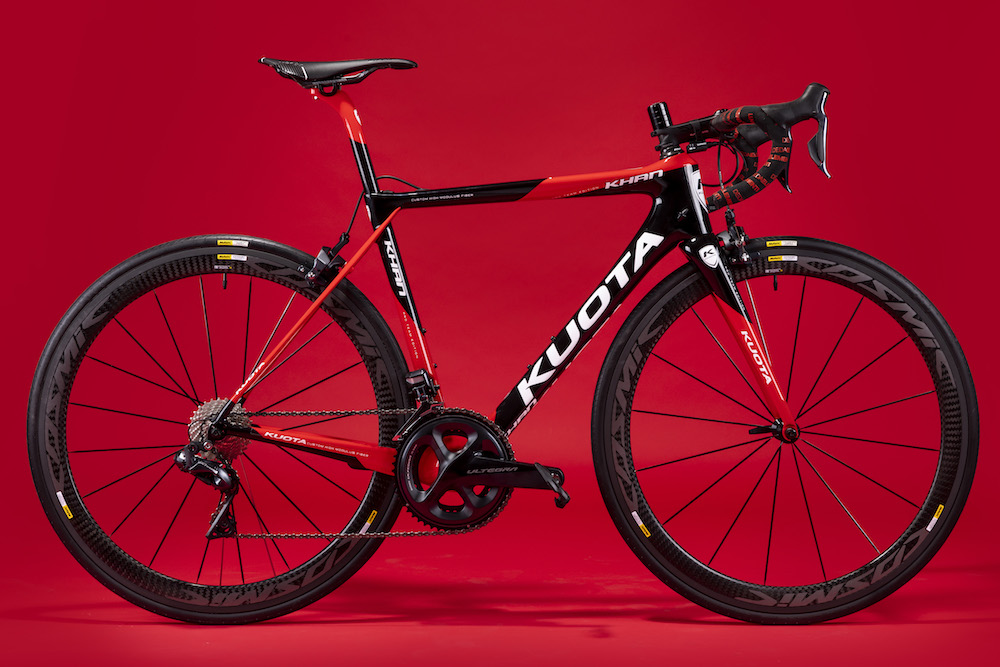
The Kuota Khan has the lively, urgent feel of a bike that wants to be ridden fast. You’ll want to push its limits on tricky descents and fast straights. But despite that, it’s not an awkward or uncomfortable machine to ride, even with a firmish saddle. It’s quite an edgy ride, not like the calm mile-munching of, say, a Pinarello Dogma. Rather like the difference between Bouhanni and Froome, in fact.
-
+
Classy Italian looks
-
+
Edgy ride without being a handful
-
+
Very well finished
-
+
Can choose your own spec
-
-
Wheels are nice, but look a bit dated in the world of all-carbon tubeless-ready clinchers
You can trust Cycling Weekly.

Despite its Italian roots, Kuota is a brand that flies a little under the radar compared to the likes of Pinarello, although it’s been in business since 2001. Kuota is based within a couple of kilometres of the famous Monza motor racing circuit, which seems to rub off on the Kuota Khan, its range-topping race machine.
Kuota says that the Khan is a bike created for the needs of the pros. For the next two seasons, Kuota is the bike sponsor of the Cofidis pro team, with Stéphane Rossetto riding his Khan to victory on Stage Four of the Tour de Yorkshire and Danny Navarro having a nearly moment on the last stage of the Critérium du Dauphiné. Kuota also has a significant presence in the world of triathlon.
The Khan frameset is priced at £2799 by UK importer DHW Agencies, with the test bike as built costing £5495.
Frame
The Kuota Khan frameset is a classic racing design, with chunky main triangle for power delivery offset by more skinny, kinked seat stays to help cushion the ride. The bottom bracket area is particularly oversized, both in width and height. The frame even features a cross-rib between the down tube and seat tube to add to the rigidity at the wide BB386 bottom bracket.
You get an integrated seatpost clamp in the top tube and a chunky head tube on the Kuota Khan. As you’d expect, all the cables run internally through the high modulus carbon fibre frame, with Kuota vaunting the highly crosslinked proprietary nanopolymer resin used.
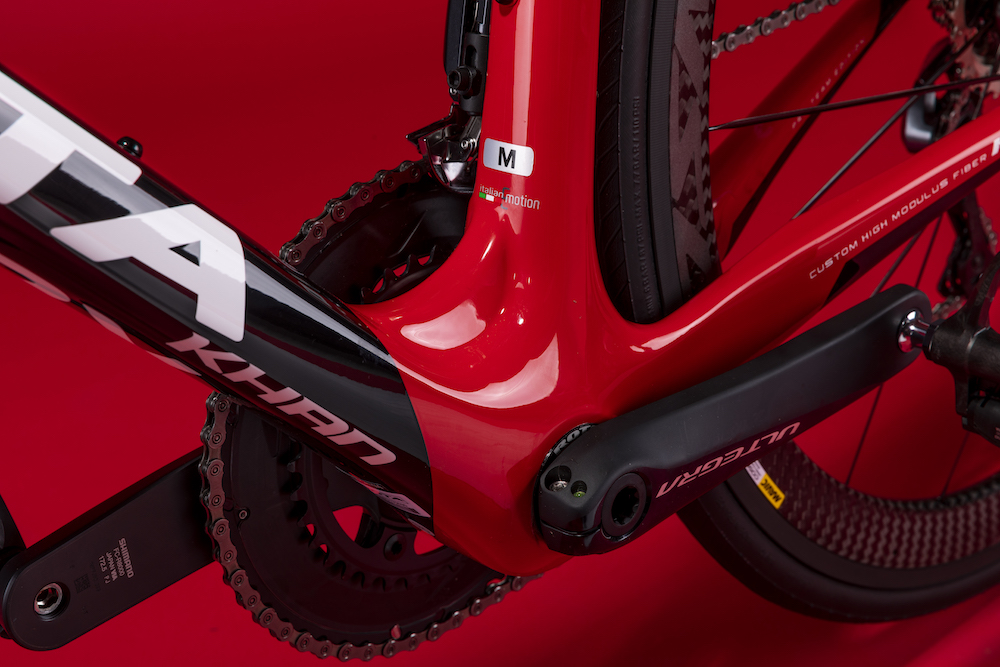
Kuota builds the frame with size-specific carbon lay-up for comparable ride qualities across sizes. It claims that a painted medium frame weighs a competitive 845g, with our complete bike coming out at 7.35kg.
With wider tyres becoming more prevalent, there’s clearance for 28mm rubber, although the test bike comes with 25mm Mavic tyres. The bike is beautifully finished with lustrous paintwork in the striking red and black livery used by Cofidis and its maverick sprinter Nacer Bouhanni. It’s one of the best paint jobs we’ve seen in a while here at Cycling Weekly.
Specification
UK importer DHW Agencies builds the Khan to order, so you can have your choice of components and gearing to suit your riding style. We went with a Shimano Ultegra Di2 semi-compact 52/36 groupset with 11-28 cassette.
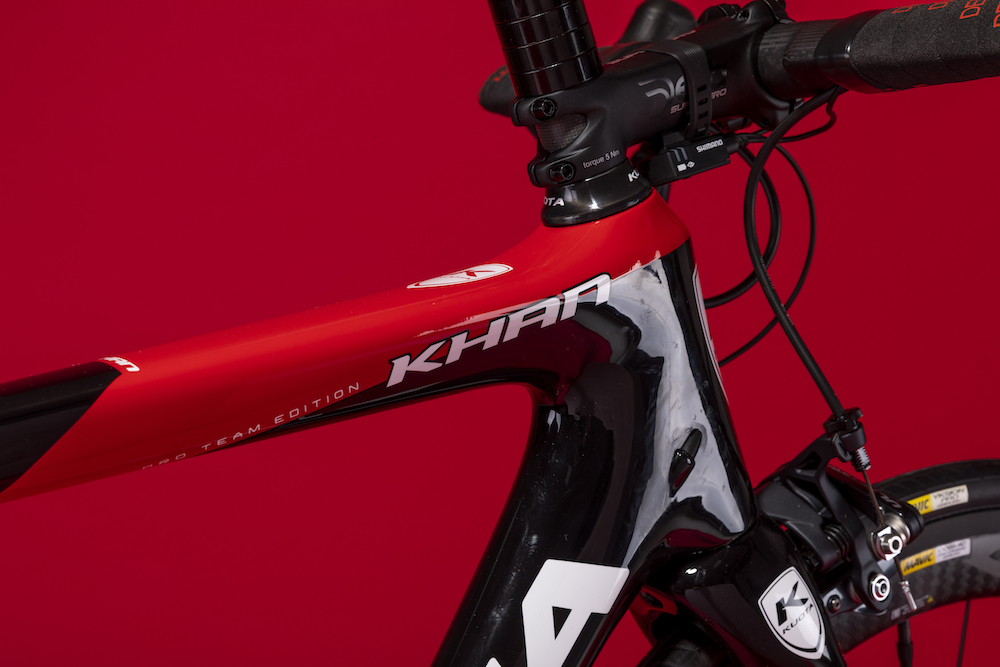
Still the cheapest entry point into electronic shifting, Ultegra Di2 offers you all the advantages of the much pricier Dura-Ace Di2, including the option to set up synchronised or semi-synchronised front and rear changes. This lets you configure your shifters so that the right shifts up and the left down, with the shifting brain taking care of the front and rear changes for you.
You can parameterise the shifting using Shimano’s e-Tube app on a phone or computer. Although you can get a bar end junction box for Ultegra Di2 R8050, the test bike has a stem-mounted one.
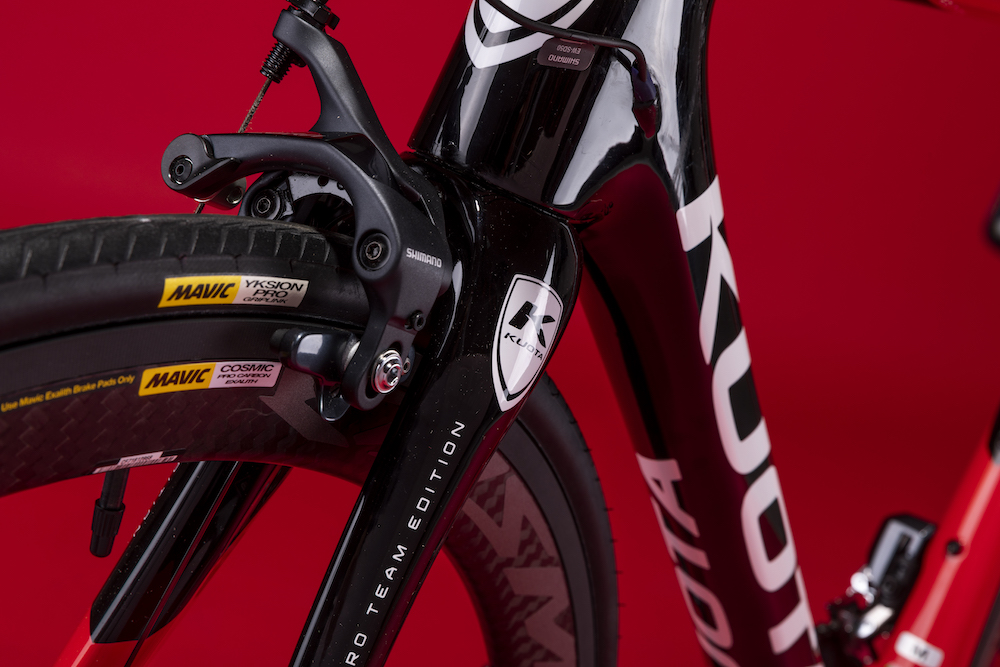
Our Khan comes with Mavic Cosmic Pro Carbon Exalith 45mm deep wheels, with a 17mm internal section. Not quite as flashy as Mavic’s newer Cosmic Pro Carbon SLT wheels, they come with an alloy brake track which has Mavic’s Exalith treatment, giving excellent wet and dry weather braking and, Mavic says, improved wear resistance.
They’re a smart wheelset with an £1139 price tag if bought separately and claimed weight is 1690g. They come with Mavic’s Yksion Griplink front and Powerlink rear tyres. Unlike most Mavic wheelsets, they’re not tubeless ready.
Kuota has its own carbon seatpost, which is topped off with a (now discontinued) Selle San Marco Concor Carbon FX saddle. The stem is a Deda Superzero number, while the bars are Kuota Katch carbon with aero tops.
Riding the Kuota Khan
The Khan is a bike that has a thoroughbred feel to it, the moment you get riding. There’s an edginess to the ride which, coupled with a low front end, encourages you to make the most of the bike’s potential.
Although the frame isn’t overtly aero, there are features like the pointy head tube, which look as if they should make you go faster. Coupled to the deep and reasonably light Mavic wheels, it makes for a machine that just feels fast.
The San Marco Concor Carbon FX saddle is quite firm, without a lot of padding. Nevertheless, the Kuota Khan feels comfortable enough on the Chilterns’ bumpy back roads. A swap out for a plusher saddle and ride comfort would be up there with the best race-oriented bikes.
That’s aided by the Kuota carbon bars, which help soak up road vibrations. The wide tops provide a comfortable perch for the hands, as well as the potential for aero advantage.
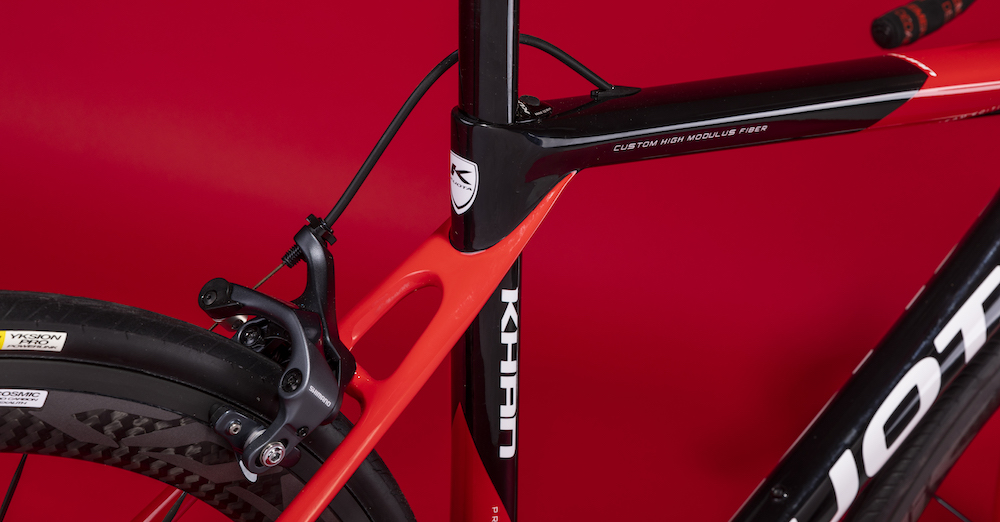
You’ve got the steering precision to negotiate tricky downhills – or to steer round walkers in the middle of the road on blind bends. Coupled with the excellent, if noisy, braking from Mavic’s Exalith alloy tracks and quality Yksion tyres, I always felt fully in control.
Ultegra Di2 functioned as you’d expect, giving precise, snappy changes both front and rear. With the fat bottom bracket and its light weight, the Kuota Khan climbs purposefully as well, both in and out of the saddle, making longer ascents that much less of a grind.
Value
For what is essentially a bespoke spec, built to your requirements on a classy Italian-brand frameset, the Kuota Khan looks like good value when compared to many other options. Of course, like the majority of Italian bikes, with the exception of a very few like the Colnago C64, the frame bears a Made in China sticker. But that doesn’t detract from the quality finish and ride.
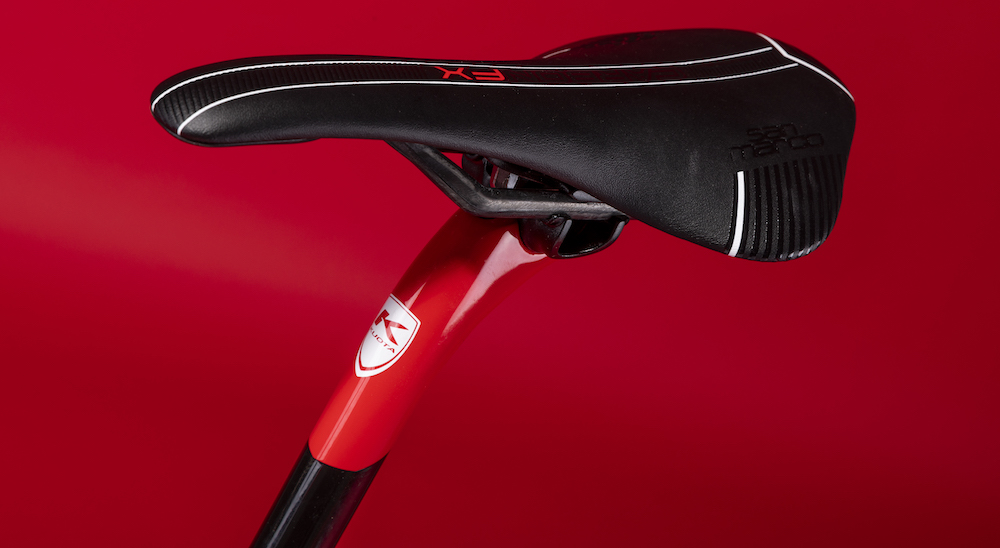
You might get Dura-Ace Di2 for a similar price in other brands, but Ultegra Di2 is up there with that more expensive option in ergonomics and shifting quality. Other components are chosen to give you a first class ride too.

Thank you for reading 20 articles this month* Join now for unlimited access
Enjoy your first month for just £1 / $1 / €1
*Read 5 free articles per month without a subscription

Join now for unlimited access
Try first month for just £1 / $1 / €1
Get The Leadout Newsletter
The latest race content, interviews, features, reviews and expert buying guides, direct to your inbox!
Paul started writing for Cycling Weekly in 2015, covering cycling tech, new bikes and product testing. Since then, he’s reviewed hundreds of bikes and thousands of other pieces of cycling equipment for the magazine and the Cycling Weekly website.
He’s been cycling for a lot longer than that though and his travels by bike have taken him all around Europe and to California. He’s been riding gravel since before gravel bikes existed too, riding a cyclocross bike through the Chilterns and along the South Downs.
-
 'I'll take a top 10, that's alright in the end' - Fred Wright finishes best of British at Paris-Roubaix
'I'll take a top 10, that's alright in the end' - Fred Wright finishes best of British at Paris-RoubaixBahrain-Victorious rider came back from a mechanical on the Arenberg to place ninth
By Adam Becket Published
-
 'This is the furthest ride I've actually ever done' - Matthew Brennan lights up Paris-Roubaix at 19 years old
'This is the furthest ride I've actually ever done' - Matthew Brennan lights up Paris-Roubaix at 19 years oldThe day's youngest rider reflects on 'killer' Monument debut
By Tom Davidson Published
-
 'One of the hardest races I've ever done in my life' - Tadej Pogačar finishes runner-up on Paris-Roubaix debut after crash
'One of the hardest races I've ever done in my life' - Tadej Pogačar finishes runner-up on Paris-Roubaix debut after crashWorld champion reacts to 'extremely hard' battle with Mathieu van der Poel
By Tom Davidson Published